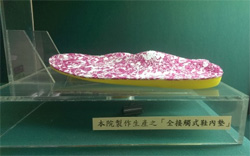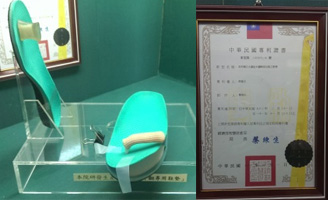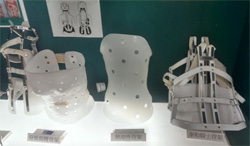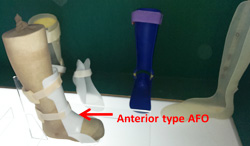Medical Technology
Over the years, the Department of Physical Medicine and Rehabilitation has major breakthroughs and innovations in the development of new medical technologies. The development is for one major purpose only – to improve the life quality of the needed patients. We have well-known success in the development of novel ultrasound-guided injection techniques and fabricating prosthetic and orthotic devices.
Ultrasound-guided injection techniques
Soft tissue musculoskeletal ultrasound is a safe imaging diagnostic tool without radioactivity. In fact, musculoskeletal ultrasound itself is a novel piece of medical technology that can be applied in diagnosing all sorts of diseases. It is widely used in gynecology, obstetrics, and gastroenterology. In physical medicine and rehabilitation, it can be used to diagnose soft tissue disorders and also as a needle guidance tool to perform injection and aspiration procedures accurately.
Dr. Chen Carl and Dr. Chen Max JL of the Department of Physical Medicine and Rehabilitation in Chang Gung have combined the concept of interventional spine injection and musculoskeletal ultrasound to develop the novel ultrasound-guided caudal epidural injection. This injection technique is effective in the treatment of low back pain caused by lumbar spinal stenosis and herniated lumbosacral intervertebral discs. This treatment method was published in the high impact factor anesthesiology journal and is highly cited. Both doctors received the outstanding research award for the development of this novel injection technique.
CHEN, C. P., TANG, S. F., HSU, T. C., TSAI, W. C., LIU, H. P., CHEN, M. J., DATE, E. & LEW, H. L. 2004. Ultrasound guidance in caudal epidural needle placement. Anesthesiology, 101, 181-4.
Assistive Devices
Foot disorder is frequently encountered in the general public. Problems of the foot and ankle such as pes cavus, pes planus, hallux valgus, and plantar fasciitis are the frequent causes of foot pain observed in rehabilitation outpatient clinic. Surgery is not always needed in these foot disorders. Professor Tang Simon of our department has designed many insoles to treat and correct these foot problems, and have won patents for these designs from the government sector.

The design of total contact insole (TCI) for patients with pes planus (flat foot).

The corrective insole design for the treatment of hallux valgus with overriding second toe.
Scoliosis is a frequent problem encountered in our outpatient clinic. When surgery is not yet required, spinal bracing can be beneficial for the patient for postural correction, alleviation of back pain, and preventing scoliosis from getting worse. Our assistive device center has the latest CAD/CAM (computer aided design and manufacturing) system for the fabrication of all sorts of body jackets and braces.

Different types of body jackets and braces are fabricated by our department to be used for patients with scoliosis.
Our department is also well-known for the fabrication of orthotic devices. Conventionally, the posterior type ankle-foot-orthosis (AFO) was commonly fabricated for patients with stroke and suffering plantarflexion of the foot. However, the posterior type will impede the range of motion of the ankle joint. Our department has designed the anterior type AFO. This novel design is lighter and easier to wear. Foot contact becomes better and is more suitable for post-stroke gait training. Nowadays, most of the rehabilitation centers worldwide fabricate the anterior type AFO to be worn by their stroke patients and patients suffering from other upper motor neuron disorders. This design has been published in the reputable rehabilitation journal.
WONG, A. M., TANG, F. T., WU, S. H. & CHEN, C. M. 1992. Clinical trial of a low-temperature plastic anterior ankle foot orthosis. Am J Phys Med Rehabil, 71, 41-3.
